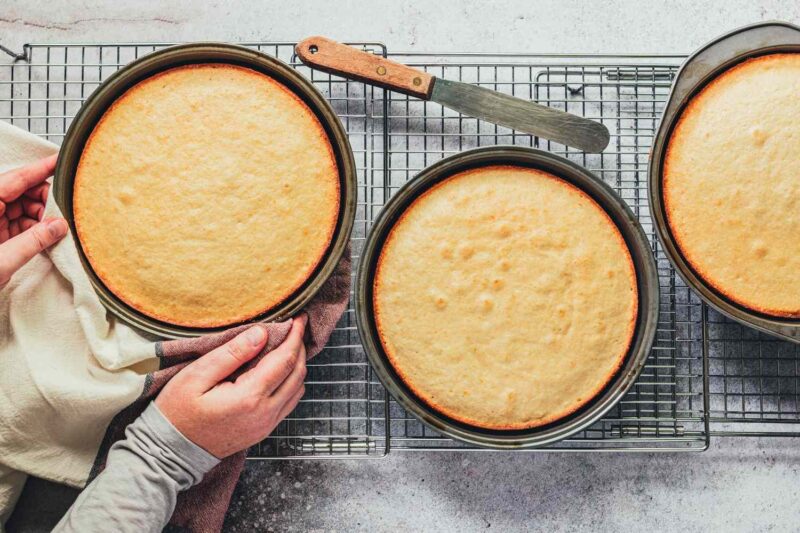Creating a light and airy cake isn’t just about beating eggs properly or folding in flour with surgical precision. It also comes down to the tin you bake it in. The wrong tin can turn a perfect batter into a sunken, overcooked, or dry disappointment. This article isn’t a list of the newest cake tins on the market—it’s a serious breakdown of what actually works if your goal is to bake soft, fluffy, golden cakes that rise evenly and release cleanly.
Think of this as a practical guide written by someone who’s ruined their fair share of genoise in questionable pans and lived to tell the tale.
Key Highlights
- Tin material dramatically affects how evenly your cake bakes.
- Shape, depth, and wall angle all influence structure and rise.
- Light-colored aluminum tins are ideal for fluffy sponge cakes.
- Springform and loose-bottom options offer versatility, but require proper prep.
- A good tin supports consistent results—especially if you bake often.
Why Cake Tins Aren’t Just Containers
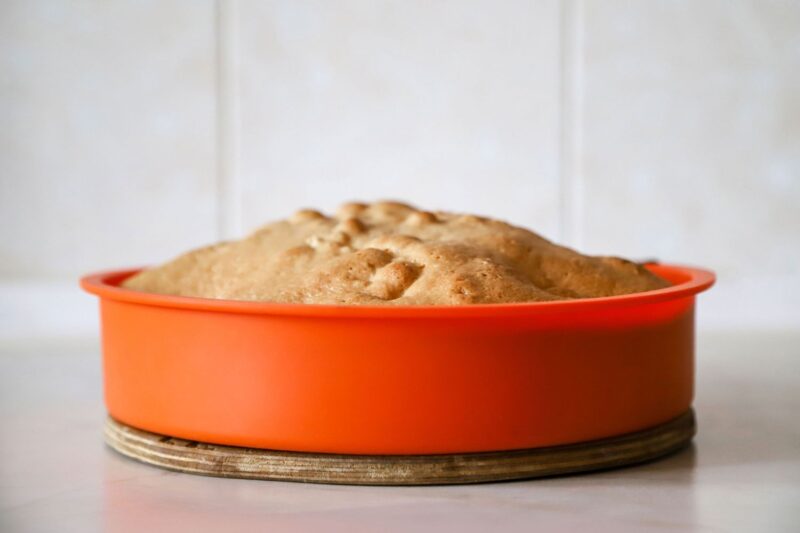
Most beginner bakers think the cake tin is just a passive piece of equipment—you pour in the batter, slide it in the oven, and hope for the best. But the truth is, your tin has an active role in how your cake develops. It determines how the heat is transferred to your batter, how evenly it rises, and whether the edges dry out before the center cooks through.
Materials like aluminum conduct heat quickly and evenly, which promotes smooth, controlled baking. Dark-colored tins absorb heat faster and can overbake the sides before the center has set. If your cake rises tall in the middle and stays low on the edges, you may be using the wrong tin—or one that’s warped or uneven.
So if you are looking for cake tins for perfect baking results, the Pyrex collection offers a solid lineup that hits all the marks: even heat distribution, durable non-stick coatings, and well-balanced shapes for everything from a simple sponge to layered birthday cakes. They are especially good if you’re upgrading from older, unreliable pans and want consistent results without the guesswork.
It’s not just about aesthetics. A good tin contributes directly to texture. That soft crumb you’re aiming for? The gentle rise? Even browning? All of it is affected by your bakeware choice.
Tin Materials: What Actually Works for Soft Cakes
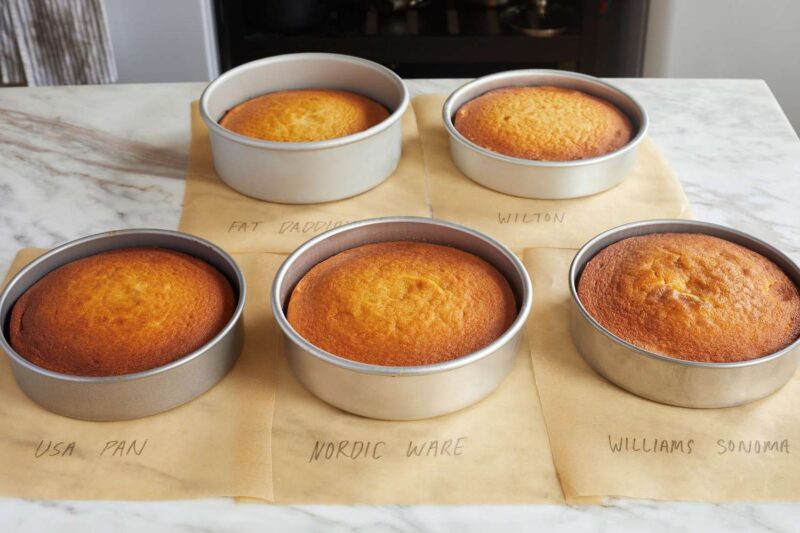
Before you even think about greasing a pan or lining it with parchment, it helps to understand what your cake tin is made of. Not all materials behave the same in the oven, and if you’re chasing light, fluffy results, this can make or break your bake.
So let’s look at the core materials used in modern bakeware, and which ones actually support soft, cloud-like cakes.
Metal (Aluminum or Steel)
This is the gold standard for sponge cakes—and for good reason. Aluminum and steel tins heat quickly, cool down fast, and offer consistent baking results. Light-colored aluminum is particularly forgiving for recipes where overbaking is a risk, like chiffon or angel food cake. If you want that soft, pillow-like bite, go for tins with smooth interior walls and even thickness.
However, avoid ultra-thin budget tins. They often warp in high heat and lead to uneven bakes. A warped base or twisted wall will affect your rise, sometimes creating a sloped or cracked surface.
Silicone
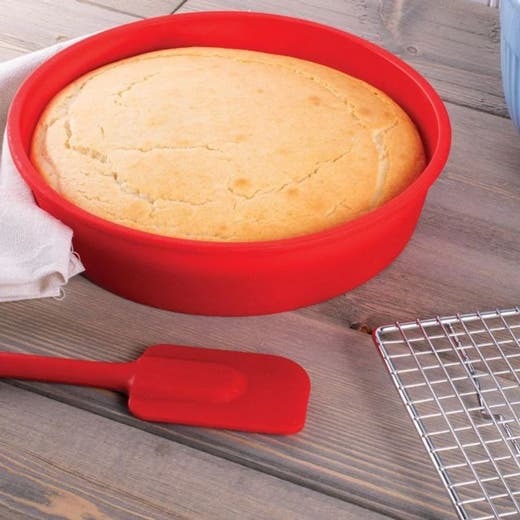
Silicone cake molds are tempting—they’re flexible, colorful, and promise an easy release. But they come with drawbacks. Silicone doesn’t conduct heat as well, which often results in longer bake times and a softer crust that lacks structure. That’s fine for novelty shapes or layered mousse cakes, but if you’re baking a sponge? Not ideal.
Glass and Ceramic
Great for casseroles. Not great for light cakes. Glass retains heat longer, which can result in overcooked bottoms and undercooked centers. It’s also more prone to temperature shock. Unless your cake is dense (like a pudding cake or sticky toffee), glass is better left in the cabinet.
Size, Shape, and Structure: It All Adds Up
It’s not just about round vs. square. The dimensions and shape of your tin can completely change your final result.
- Depth matters. Deeper tins are better for sponges and celebration cakes, as they allow the batter to rise without spilling or doming excessively.
- Wall angle is important too. Straight vertical sides encourage even layering, especially when you’re stacking cakes later. Angled sides are better for everyday bakes but can cause shrinkage in delicate batters.
- Edges and corners play a role in sticking and browning. Sharp corners trap batter, which may cause tearing or uneven cooking. Slightly rounded corners allow for better expansion.
Best Cake Tins for Consistently Fluffy Results
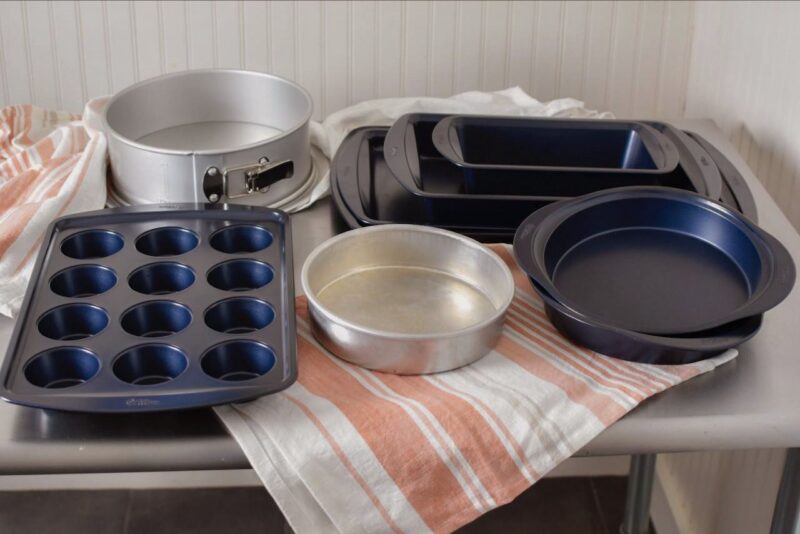
Let’s go over some real recommendations that actually work in the kitchen—not just in theory.
MasterClass Non-Stick Deep Round Cake Tin
If you’re baking tall, airy sponges, this tin delivers excellent depth and sturdy sides that resist warping. The two-layer non-stick coating holds up well even with regular use, and the rolled edge prevents flexing in high heat.
- Size range: 6″ to 10″
- Material: Carbon steel with a strong non-stick finish
- Ideal for: Classic sponge, chiffon, or layered celebration cakes
Pyrex Magic Non-Stick Cake Tin
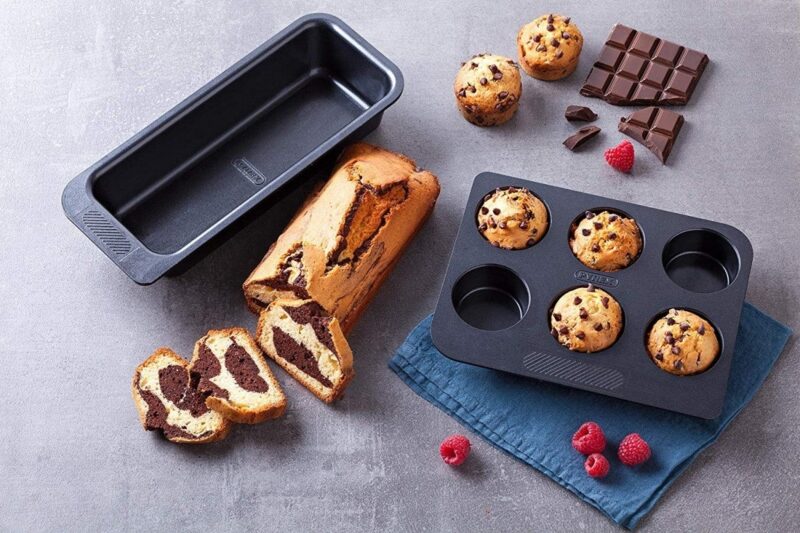
As a well-known name in bakeware, Pyrex offers a no-fuss solution for home bakers who value reliability. The Magic tin features smart engineering—flat bases, even wall thickness, and an easy-grip edge that helps avoid spills when transferring to and from the oven.
- Material: Carbon steel with dual non-stick layers
- Performance: Even baking with minimal sticking and easy clean-up
- Great for: Everyday sponges, butter cakes, and traybakes
Fat Daddio’s Anodized Aluminum Round Pan
This one’s beloved in the baking community for a reason. The anodized aluminum gives superior heat distribution with no chemical coatings to wear off. Plus, it cools fast after baking, which helps preserve moisture and prevents overcooking.
- Material: Raw anodized aluminum
- Pros: Lightweight, durable, professional-grade
- Best for: High-rising cakes and consistent layering
Nordic Ware Naturals 9” Round
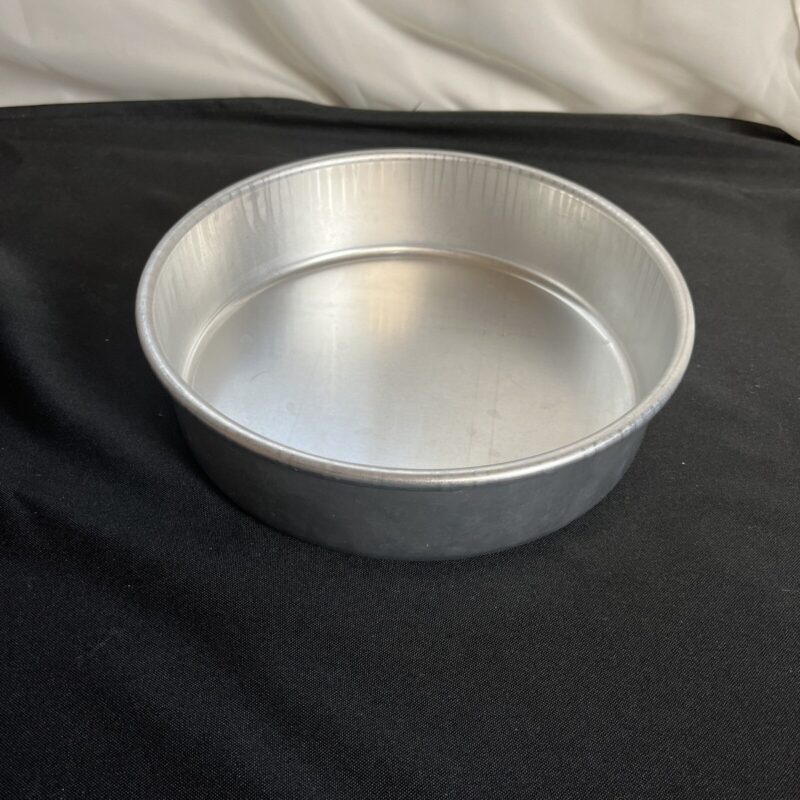
A classic go-to. The thick aluminum walls promote even heat, while the reinforced rim means it won’t buckle after a few uses.
- Bonus: No coatings = great if you’re particular about what touches your food
- Excellent for: Sponge cakes with delicate crumb or meringue-based batters
Springform or Loose-Bottom: Do You Need One?
If you’re baking cheesecakes, mousse cakes, or flourless bakes, then absolutely—yes. But even for regular cakes, having a loose-bottom tin can make all the difference in releasing a fragile sponge without damage.
- Springform pans have a clip on the side that releases the wall from the base. These are handy when you’re baking layered cakes that need to hold their shape after cooling.
- Loose-bottom tins allow you to gently push the base up to remove the cake. They’re fantastic for tiered or decorated cakes where you don’t want to risk a flip-and-break situation.
Just make sure to line the bottom well and avoid overly thin batters, which may leak.
Prep Your Tin Properly – Even If It’s Non-Stick
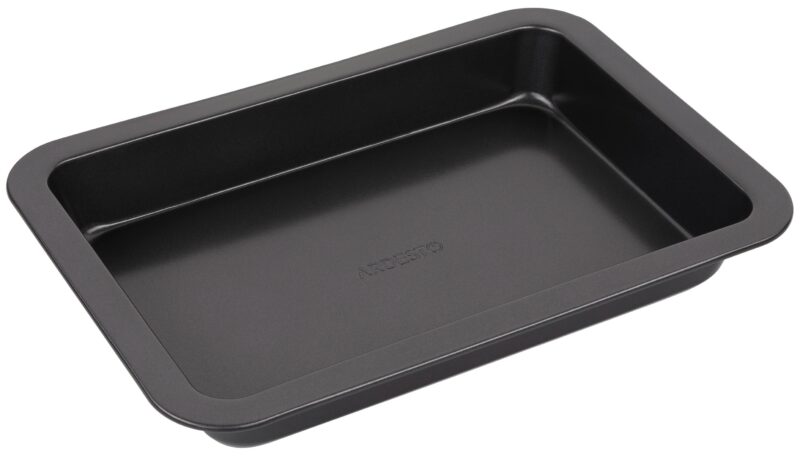
Trust me: if you’ve ever lost a cake to the inside of a tin, you’ll never skip prep again.
- Grease the sides and base with butter or oil spray. Not margarine—it burns.
- Line the base with parchment. Cut it to fit exactly, especially in round tins.
- Dust the sides with flour or caster sugar for extra insurance. It creates a delicate barrier that helps the cake release cleanly and adds a subtle crisp to the edge.
Even high-end non-stick tins can hold onto delicate sponge if they’re not properly prepped. Don’t gamble—prep like you mean it.
Tin Choice Based on Cake Style
| Type of Cake | Recommended Tin |
|---|---|
| Sponge or Genoise | Light-colored aluminum round tin |
| Cheesecake | Springform with sealed base |
| Angel Food or Chiffon | Tube pan or uncoated deep round tin |
| Layered Celebration | Matching anodized aluminum tins |
| Sticky or Dense Cakes | Heavy-duty steel or ceramic loaf tin |
| Shaped/Novelty Bakes | Silicone mold or shaped steel pan |
What to Avoid When Choosing a Cake Tin
- Overused non-stick tins with scratched surfaces—they lose effectiveness and release harmful chemicals at high temps.
- Very dark tins for delicate sponges—they absorb too much heat and can lead to burnt sides.
- Too-shallow pans for recipes that require rise—they cause overflow or flat cakes.
- Unbalanced or warped bases, which can tilt during baking and result in uneven structure.
Your tin should work with you—not make things harder.
Bakeware That Pulls Its Weight
Baking a fluffy, gorgeous cake is one of the most satisfying kitchen wins—and having the right cake tin makes that possible. Once you stop wrestling with uneven browning, stuck edges, or inconsistent rises, you’ll wonder why you didn’t switch sooner.
Upgrading to cake tins for perfect baking results isn’t about buying something trendy. It’s about removing variables from your bake so your skills, not your tools, are what determine the result.
So next time you whip up a sponge, remember: your tin is just as important as your ingredients.

